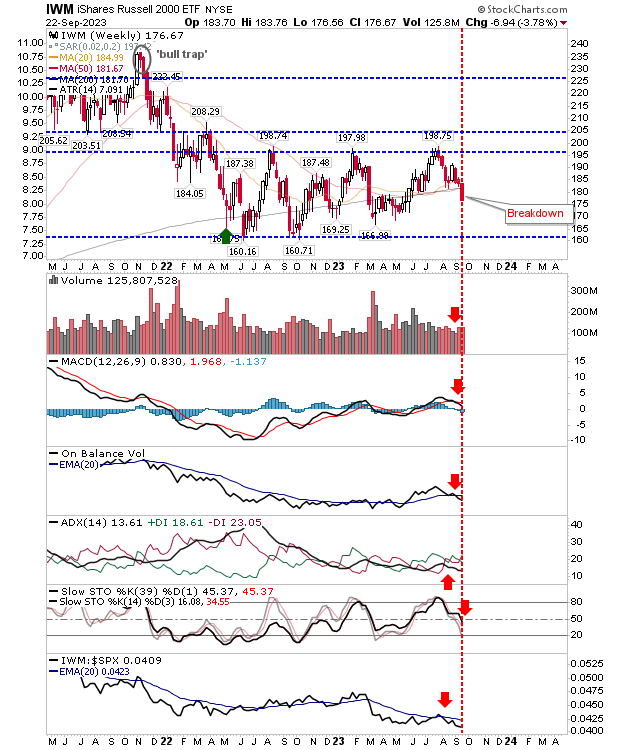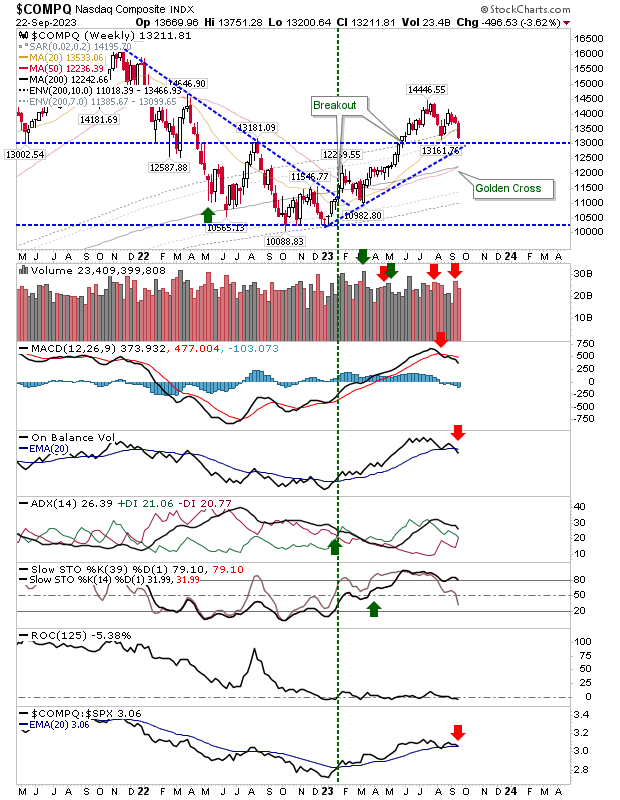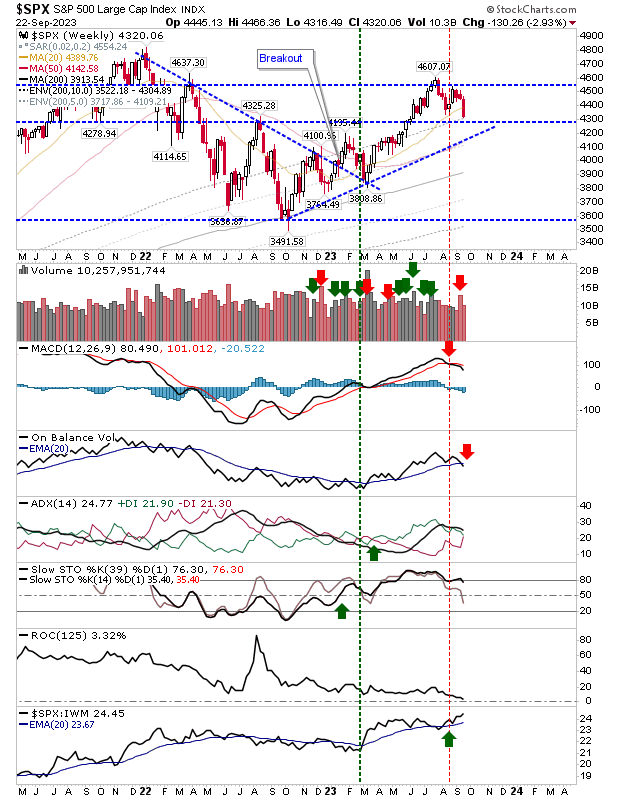While the Russell 2000 has recovered from breaks of its 200-week MA before, every such test (and break) of the moving average increases the chance of a flip from a level of support to resistance.
Supporting technicals for the index is next bearish, but more importantly, since the sharp shift in relative performance against the S&P 500 in March, the index has struggled to regain the initiative.
More importantly, the summer rally barely registered in terms of relative performance. This means the likelihood of a move to an oversold state is high, and therefore further losses can be expected here.

The Nasdaq will be next to see a test of support as 13,000 comes into view. Unlike the Russell 2000 (IWM), it has overbought momentum and (just about) bullish trend strength.
The on-balance volume has moved to a 'sell' trigger, following the earlier 'sell' trigger in the MACD. The 50-week MA has created a 'golden cross' with the 200-week MA, albeit from a relatively flat starting point. It's still all to play for, but given the aforementioned action in the Russell 2000, what is likely to come next is not good news.

The S&P 500 weekly chart sits in a similar predicament to the Nasdaq, with 4,325 support key. It's managing 'sell' triggers in the MACD and On-Balance-Volume to go with more bullish signals in ADX and Momentum. It does have a key advantage in that it's outperforming the Russell 2000, which means that if buyers do emerge to support the indexes, they will be buying into the S&P 500 first.

It's two ticks in the bull column for the S&P 500 and Nasdaq on the weekly chart and one tick in the bearish column for the Russell 2000 ($IWM). Unfortunately, it's small-cap stocks that do most of the talking when it comes down to market leadership and they are saying 'sell'. At the very least, look for support tests in the S&P 500 and Nasdaq, and then depending on what the Russell 2000 is doing will give us an idea as to what happens next.
